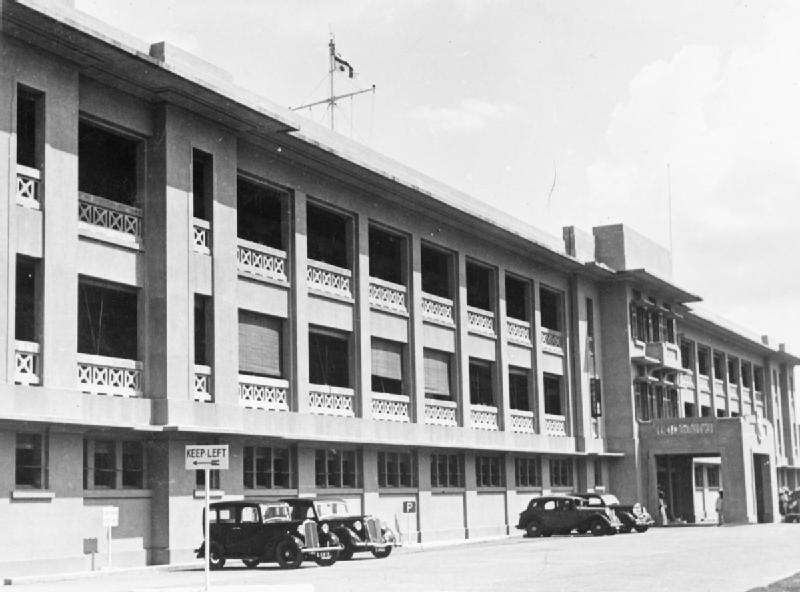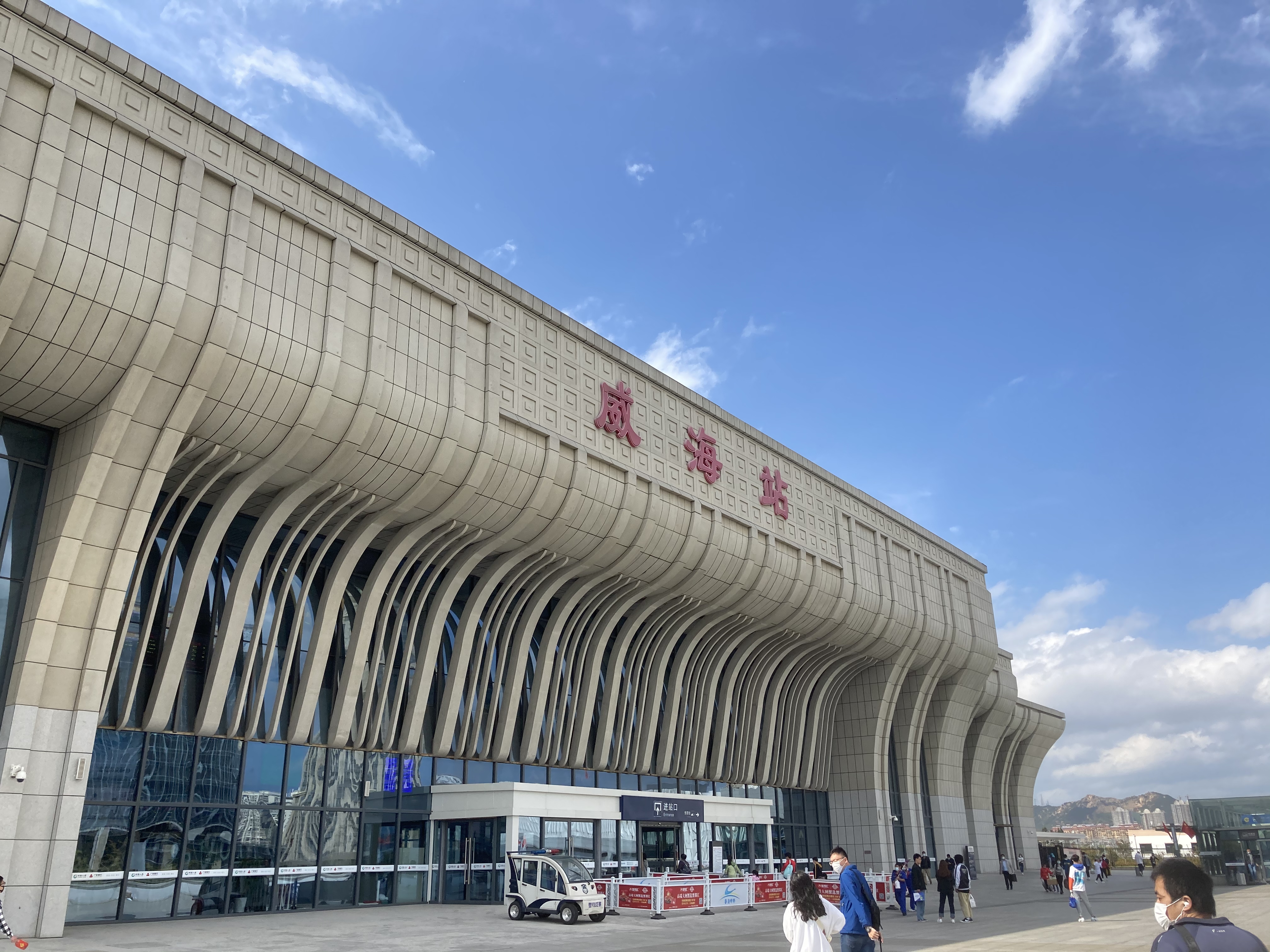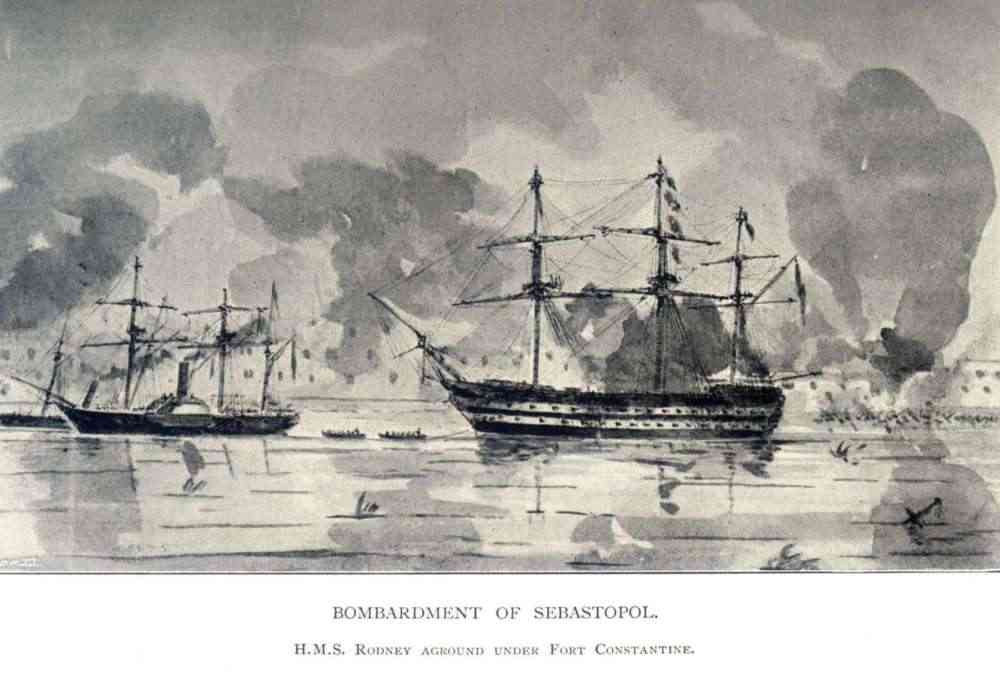|
China Station
The Commander-in-Chief, China, was the admiral in command of what was usually known as the China Station, at once both a British Royal Navy naval formation and its admiral in command. It was created in 1865 and deactivated in 1941. From 1831 to 1865, the East Indies Station and the China Station were a single command known as the East Indies and China Station. The China Station, established in 1865, had as its area of responsibility the coasts of China and its navigable rivers, the western part of the Pacific Ocean, and the waters around the Dutch East Indies. The navy often co-operated with British commercial interests in this area. The formation had bases at Singapore (Singapore Naval Base), HMS ''Tamar'' (1865–1941 and 1945–1997) in Hong Kong and Wei Hai (at Liugong Island) (1898–1940). The China Station complement usually consisted of several older light cruisers and destroyers, and the Chinese rivers were patrolled by a flotilla of suitable, shallow-draught gunboat ... [...More Info...] [...Related Items...] OR: [Wikipedia] [Google] [Baidu] |
Danae-class Cruiser
The ''Danae'' or D class consisted of eight light cruisers built for the Royal Navy at the end of World War I which also saw service in World War II. Design The ''Danae''s were based on the design of the preceding series, but were lengthened by to allow a sixth gun to be worked in between the bridge and the fore funnel. This gave an 'A', 'B', 'P', 'Q', 'X', 'Y' arrangement. Additionally, the twin torpedo tubes in the C class were replaced by triples, giving the ''Danae''s a total of twelve tubes, the heaviest torpedo armament for a cruiser at the time. Machinery and general layout was otherwise the same as the C class cruiser#Ceres, ''Ceres'' group of C-class cruisers. However, ''Danae'', ''Dauntless'' and ''Dragon'' were ordered before the ''Capetown'' group, and therefore did not incorporate the improved bow design of the latter; the C class were ''very'' wet forwards, and in the ''Capetown''s sheer was increased forwards into a knuckled "trawler bow". Such was the succes ... [...More Info...] [...Related Items...] OR: [Wikipedia] [Google] [Baidu] |
Weihai
Weihai ( zh, t=, p=Wēihǎi), formerly Weihaiwei ( zh, s=, p=Wēihǎiwèi, l=Mighty Sea Fort, first=t), is a prefecture-level city and major seaport city in the easternmost Shandong province of China. It borders Yantai to the west and the Yellow Sea to the east, and is the closest mainland Chinese city to South Korea (specifically, Chengshan to Yeonpyeongdo). Compared with the 2,804,771 people in the 2010 Chinese census, there has been a total increase of 101,777 people over the past decade, an increase of 3.63%, with an average annual growth rate of 0.36%. Weihai's population was 2,906,548 as of the 2020 Chinese census, of whom 1,164,730 lived in the current built-up (''or metro'') area of (Huancui District) even though Wendeng, Shandong, Wendeng district to the south with 563,529 inhabitants is soon being conurbated. There are two county-level cities within Weihai; Rongcheng, Shandong, Rongcheng had a built up area with 714,211 inhabitants, while Rushan, Shandong, Rushan had 464 ... [...More Info...] [...Related Items...] OR: [Wikipedia] [Google] [Baidu] |
Alfred Ryder (Royal Navy Officer)
Admiral of the Fleet Sir Alfred Phillipps Ryder (27 June 1820 – 30 April 1888) was a Royal Navy officer. As a junior officer he undertook the role of transporting Pedro de Sousa Holstein, 1st Duke of Palmela, the Portuguese ambassador, back home to Lisbon and then delivering the Percy Doyle, the British ambassador to the Republic of Mexico, to Mexico City. He then led a naval brigade dispatched to Nicaragua to deal with the unlawful detention of two British subjects. He pursued the Nicaraguan commander, a Colonel Salas, for 30 miles up the San Juan River and captured the fort at Serapique. Ryder became commanding officer of the frigate HMS ''Dauntless'' in which he saw action in the Black Sea and then took part in the Battle of Kinburn during the Crimean War. He went on to be Controller of the Coastguard, Commander-in-Chief, China Station and then Commander-in-Chief, Portsmouth. In retirement he was an active member of the Church of England Purity Society. He suffered fr ... [...More Info...] [...Related Items...] OR: [Wikipedia] [Google] [Baidu] |
Charles Shadwell (Royal Navy Officer)
Admiral Sir Charles Frederick Alexander Shadwell, (31 January 1814 – 1 March 1886) was a Royal Navy officer who went on to be Commander-in-Chief, China Station. Naval career Born the fourth son of Sir Lancelot Shadwell, Charles Shadwell joined the Royal Navy in 1827. He was present during operations off Syria in 1840. In 1850 he became Commander in HMS ''Sphinx '' and took part in the Second Anglo-Burmese War. Promoted Captain in 1853, he commanded HMS ''Highflyer'' from 1856 and took part in the capture of Canton and the Battle of Taku Forts during the Second Opium War. He commanded HMS ''Aboukir'' from 1861 and HMS ''Hastings'' from 1862. He was appointed Captain-Superintendent of Gosport victualling-yard in 1864 and Commander-in-Chief, China Station in 1871. He was elected a Fellow of the Royal Society in 1861. In 1878 he was made President of the Royal Naval College, Greenwich. He retired in 1879 and in retirement lived at Meadow Bank in Melksham in Wiltshire ... [...More Info...] [...Related Items...] OR: [Wikipedia] [Google] [Baidu] |
Henry Kellett
Vice Admiral Sir Henry Kellett, (2 November 1806 – 1 March 1875) was an Irish naval officer and explorer. Career Born at Clonacody in Tipperary County, Ireland, on 2 November 1806, Kellett joined the Royal Navy in 1822. He spent three years in the West Indies and then served on survey vessels under William Fitzwilliam Owen in Africa, as second-in-command of under Edward Belcher in the East Indies, and as captain of in the First Opium War with China during which he was promoted to commander in 1841 and post-captain in 1842. In 1845 Kellett was appointed captain of the survey ship as part of a hydrography survey mission, the primary objective of which was to survey the coast of the Americas from Guayaquil to Vancouver, including the Galápagos Islands. He was temporarily reassigned in 1848 to join the search for Sir John Franklin. During this voyage he sailed through the Bering Strait across the Chukchi Sea and discovered Herald Island. Kellett landed on Herald Isla ... [...More Info...] [...Related Items...] OR: [Wikipedia] [Google] [Baidu] |
Henry Keppel
Admiral of the Fleet Sir Henry Keppel, (14 June 1809 – 17 January 1904) was a Royal Navy officer. His first command was largely spent off the coast of Spain, which was then in the midst of the First Carlist War. As commanding officer of the corvette on the East Indies and China Station he was deployed in operations during the First Opium War and in operations against Borneo pirates. He later served as commander of the naval brigade besieging Sebastopol during the Crimean War. After becoming second-in-command of the East Indies and China Station, he commanded the British squadron in the action with Chinese pirates at the Battle of Fatshan Creek when he sank around 100 enemy war-junks. He subsequently took part in the capture of Canton during the Second Opium War. Keppel went on to be Commander-in-Chief, Cape of Good Hope and West Coast of Africa Station, then Commander-in-Chief, South East Coast of America Station, Commander-in-Chief, China Station and finally Commande ... [...More Info...] [...Related Items...] OR: [Wikipedia] [Google] [Baidu] |
George King (Royal Navy Officer)
Admiral Sir George St Vincent King (15 July 1809 – 18 August 1891) was a Royal Navy officer who went on to be Commander-in-Chief, China Station. Early life King was born on 15 July 1809 at Stonehouse, Devon, the second son of Vice-Admiral Sir Richard King and Sarah Anne née Duckworth. He was educated at Royal Naval College, Portsmouth. Naval career King joined the Royal Navy in 1822. Promoted to captain in 1841, he commanded HMS ''Leander'' in the Black Sea during the Crimean War. He commanded HMS ''Rodney'' from 1854 and HMS ''St Jean d'Acre'' from 1855. In September 1856, HMS ''St Jean d'Acre'' took Earl Granville Earl Granville is a title that has been created twice, once in the Peerage of Great Britain and once in the Peerage of the United Kingdom. It is now held by members of the Leveson-Gower family. First creation The first creation came in the Pee ... to the coronation of Czar Alexander II at St Petersburg. Earl Granville was leader of the Liberal party in ... [...More Info...] [...Related Items...] OR: [Wikipedia] [Google] [Baidu] |
Eastern Fleet
Eastern or Easterns may refer to: Transportation Airlines *China Eastern Airlines, a current Chinese airline based in Shanghai * Eastern Air, former name of Zambia Skyways *Eastern Air Lines, a defunct American airline that operated from 1926 to 1991 * Eastern Air Lines (2015), an American airline that began operations in 2015 * Eastern Airlines, LLC, previously Dynamic International Airways, a U.S. airline founded in 2010 * Eastern Airways, an English/British regional airline * Eastern Provincial Airways, a defunct Canadian airline that operated from 1949 to 1986 Roads * Eastern Avenue (other), various roads * Eastern Parkway (other), various parkways * Eastern Freeway, Melbourne, Australia * Eastern Freeway Mumbai, Mumbai, India Other * Eastern Railway (other), various railroads *, a cargo liner in service 1946-65 Education * Eastern University (other) *Eastern College (other) Sports * Easterns (cricket team), South A ... [...More Info...] [...Related Items...] OR: [Wikipedia] [Google] [Baidu] |
Shanghai
Shanghai, Shanghainese: , Standard Chinese pronunciation: is a direct-administered municipality and the most populous urban area in China. The city is located on the Chinese shoreline on the southern estuary of the Yangtze River, with the Huangpu River flowing through it. The population of the city proper is the List of largest cities, second largest in the world after Chongqing, with around 24.87 million inhabitants in 2023, while the urban area is the List of cities in China by population, most populous in China, with 29.87 million residents. As of 2022, the Greater Shanghai metropolitan area was estimated to produce a gross metropolitan product (GDP (nominal), nominal) of nearly 13 trillion Renminbi, RMB ($1.9 trillion). Shanghai is one of the world's major centers for finance, #Economy, business and economics, research, science and technology, manufacturing, transportation, List of tourist attractions in Shanghai, tourism, and Culture of Shanghai, culture. The Port of Sh ... [...More Info...] [...Related Items...] OR: [Wikipedia] [Google] [Baidu] |
Panay Incident
The USS ''Panay'' incident was a Japanese bombing attack on the U.S. Navy river gunboat and three Standard Oil Company tankers on the Yangtze River near the Chinese capital of Nanjing on 12 December 1937. Japan and the United States were not at war at the time. The boats were part of the American naval operation called the Yangtze Patrol, which began following the joint British, French, and American victory in the Second Opium War. The bombing raid resulted in the sinking of the ''Panay'' as well as the deaths of three Americans on board, plus an unknown but likely high casualty toll amongst the Chinese passengers in the three river tankers. Public reaction was mixed in the U.S., with the president weighing various diplomatic and military responses only to settle for an apology and compensation. The Japanese claimed that they did not see the large U.S. flags painted on the deck and canvases of the gunboat. Tokyo officially apologized and paid a cash indemnity of $2.2 millio ... [...More Info...] [...Related Items...] OR: [Wikipedia] [Google] [Baidu] |
Yangtze
The Yangtze or Yangzi ( or ) is the longest river in Eurasia and the third-longest in the world. It rises at Jari Hill in the Tanggula Mountains of the Tibetan Plateau and flows including Dam Qu River the longest source of the Yangtze, in a generally easterly direction to the East China Sea. It is the fifth-largest primary river by discharge volume in the world. Its drainage basin comprises one-fifth of the land area of China, and is home to nearly one-third of the country's population. The Yangtze has played a major role in the history, culture, and economy of China. For thousands of years, the river has been used for water, irrigation, sanitation, transportation, industry, boundary-marking, and war. The Yangtze Delta generates as much as 20% of China's GDP, and the Three Gorges Dam on the Yangtze is the largest hydro-electric power station in the world. In mid-2014, the Chinese government announced it was building a multi-tier transport network, comprising railway ... [...More Info...] [...Related Items...] OR: [Wikipedia] [Google] [Baidu] |
Far East
The Far East is the geographical region that encompasses the easternmost portion of the Asian continent, including North Asia, North, East Asia, East and Southeast Asia. South Asia is sometimes also included in the definition of the term. In modern times, the term ''Far East'' has widely fallen out of use and been substituted by Asia–Pacific, while the terms Middle East and Near East, although now pertaining to different territories, are still commonly used today. The term first came into use in European geopolitical discourse in the 15th century, particularly the British people, British, denoting the Far East as the "farthest" of the three "Easts", beyond the Near East and the Middle East. Likewise, during the Qing dynasty of the 19th and early 20th centuries, the term "Far West (Taixi), Tàixī ()" – i.e., anything further west than the Arab world – was used to refer to the Western countries. Since the mid-20th century, the term has mostly gone out of use for the region ... [...More Info...] [...Related Items...] OR: [Wikipedia] [Google] [Baidu] |







